The Royal Malaysian Navy (RMN) will be sending 12 of its personnel and nine officers from the Boustead Naval Shipyard Sdn Bhd (BNSSB) to Wuhan, China to monitor the making of the Littoral Mission Ships (LMS).
Its chief, Tan Sri Ahmad Kamarulzaman Ahmad Badaruddin said the matter was part of the procurement contract signed between the Malaysian government, BNSSB and China Shipbuilding & Offshore International Co. Ltd on a joint building of four LMS for the RMN.
“The team for this project has been given such a huge responsibility and task to ensure technology transfer between China and Malaysia, the first of its kind involving defence.
“It is a very significant project to upgrade our fleet in stages...It will take 30 years involving the Sixth Malaysia Plan,” he told reporters after mingling with team members in a get together event here today.
According to Ahmad Kamarulzaman, the team would be sent to Wuhan soon for 37 months to learn on the making of the LMS before embarking on building two remaining ships at its naval base in Lumut, Perak.
It is hoped that with the exchange of expertise, the RMN would be able to achieve its target of building 14 other LMS in stages depending on the country's financial standing, he said.
The procurement contract was signed on March 23.
The construction of LMS is the first product approved by the government under the RMN's Transformation 15-5 Programme which could ensure a more efficient maritime surveillance and to fortify the country's sovereignty.
All 18 LMS will replace old RMN's ships which require high operating and maintenance costs.
The building of the four LMS is expected to complete in stages from 2019 to 2021.
-- BERNAMA
Published on Friday, 07 July 2017 20:53
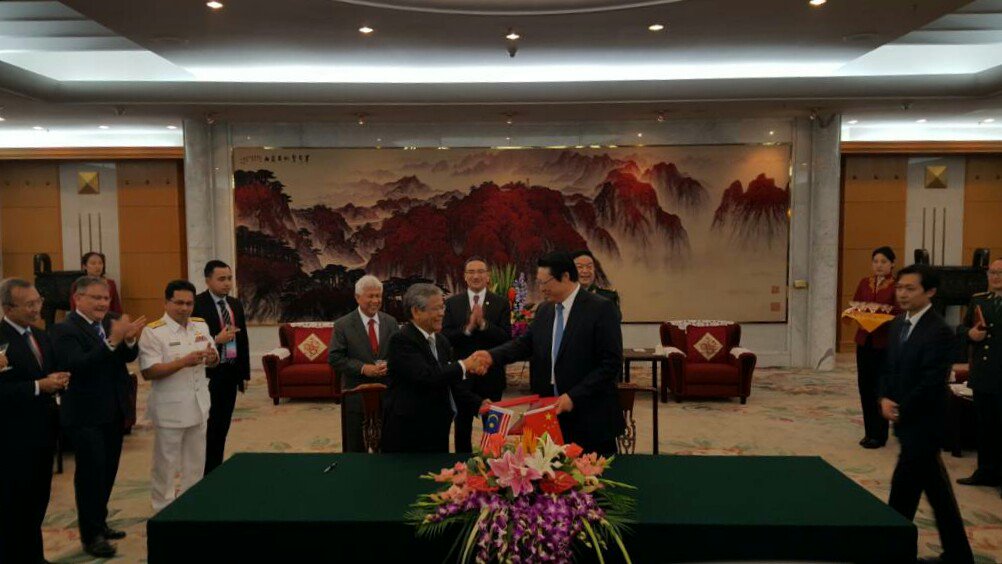
15 to 5 and LMS Updates
by Marhalim Abas
Malaysia Defence
LMS and 15 to 5 updates. The RMN 15 to 5 transformation plan is on track and the navy will have a new fleet – if it goes to plan – in 30 years time. The first two ships under the plan are the LCS – two already being built – and the LMS which is to start construction soon.
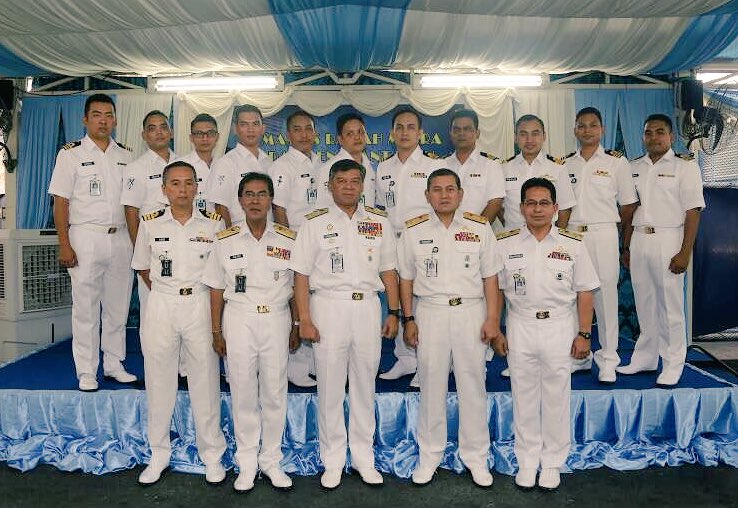 |
| The LMS project team (standing behind) posed for a picture with Kamarulzaman (third from right) |
Three LCS (including the two already built) and three LMS will be build under the current RMK11 plan which ends in 2020. For RMK12 – 2021 to 2025, the navy plans to build three more LCS, eight LMS and one each of the PV (Kedah class) and the MRSS (Damen design?).
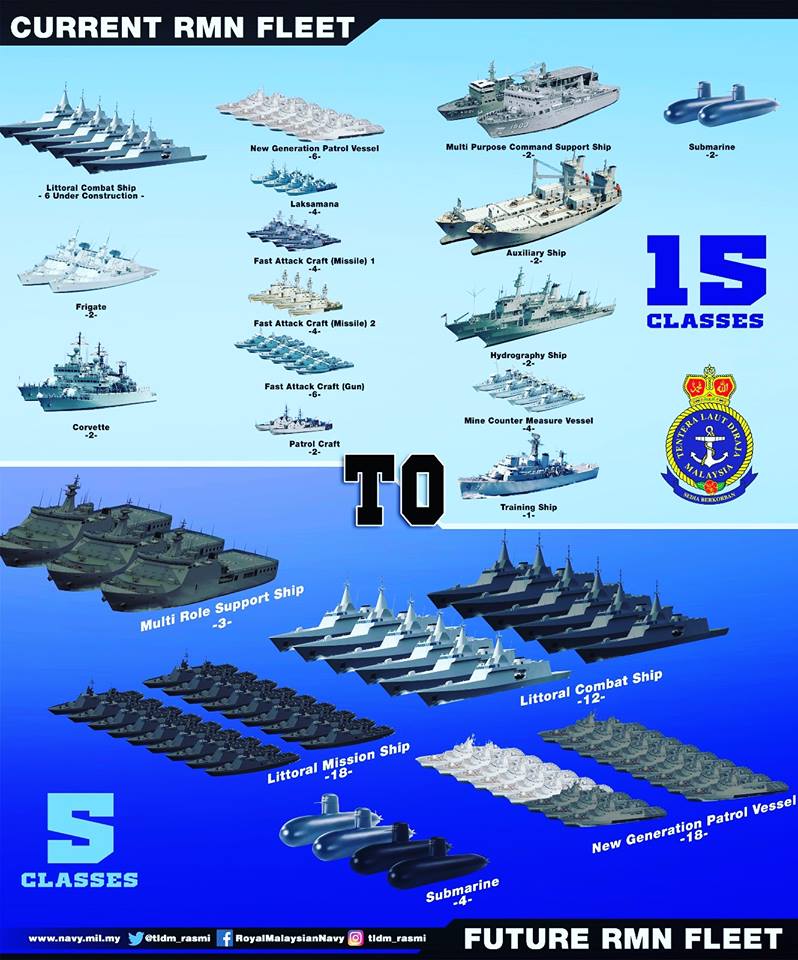 |
| RMN’s 15 to 5 plan, graphic posted on the service official Facebook page, TLDM |
Between 2026 to 2030 under the RMK13, it will be five PV, seven LMS and two more MRSS. In RMK 14 (2031=2035) funding will be sought for 5 PV and one submarine; in RMK15 (2036-2040) one each of the PV and submarine and four LCS and RMK16 (2041-45) two LCS as the replacement for a replacement for the Kedah class.
The RMN building plans were made public during the sent-off ceremony for 12 officers and men of the LMS project team at KD Seri Gombak, yesterday.
Navy chief Admiral Ahmad Kamarulzaman Ahmad Badaruddin says the project team will be stationed in Wuhan, China, to monitor the construction of the two LMS at China Shipbuilding and Offshore International Co. Ltd, at the Wuchang shipyard. Nine personnel from Boustead Naval Shipyard Sdn Bhd will also be assigned to the shipyard for the build.
The team for this project had a huge responsibility and task to ensure technology transfer between China and Malaysia, which is the first of its kind involving defence, Kamarulzaman said.
He, however, did not state when the keel will be laid and expected commissioning dates. “We will update you with the exact dates from time to time,” he says when pressed further for the construction schedule of the LMS
Kamarulzaman said the LMS could carry up to three standard ISO containers for mission modules, in the future, from mine warfare, hydrography to ISR duties. However, further details on the mission modules equipment for LMS was not available as they have not been finalised or more importantly funded, yet.
Various containerised mission modules are currently available from 120mm Nemo mortar to SSM which can be easily move from ship to ship, though RMN have yet to indicate its preference for such weapon system.
But from the CGI displayed, as reported previously, the first four LMS will be fitted with a China made 30mm RWS forward and two 12.7mm guns amidships.
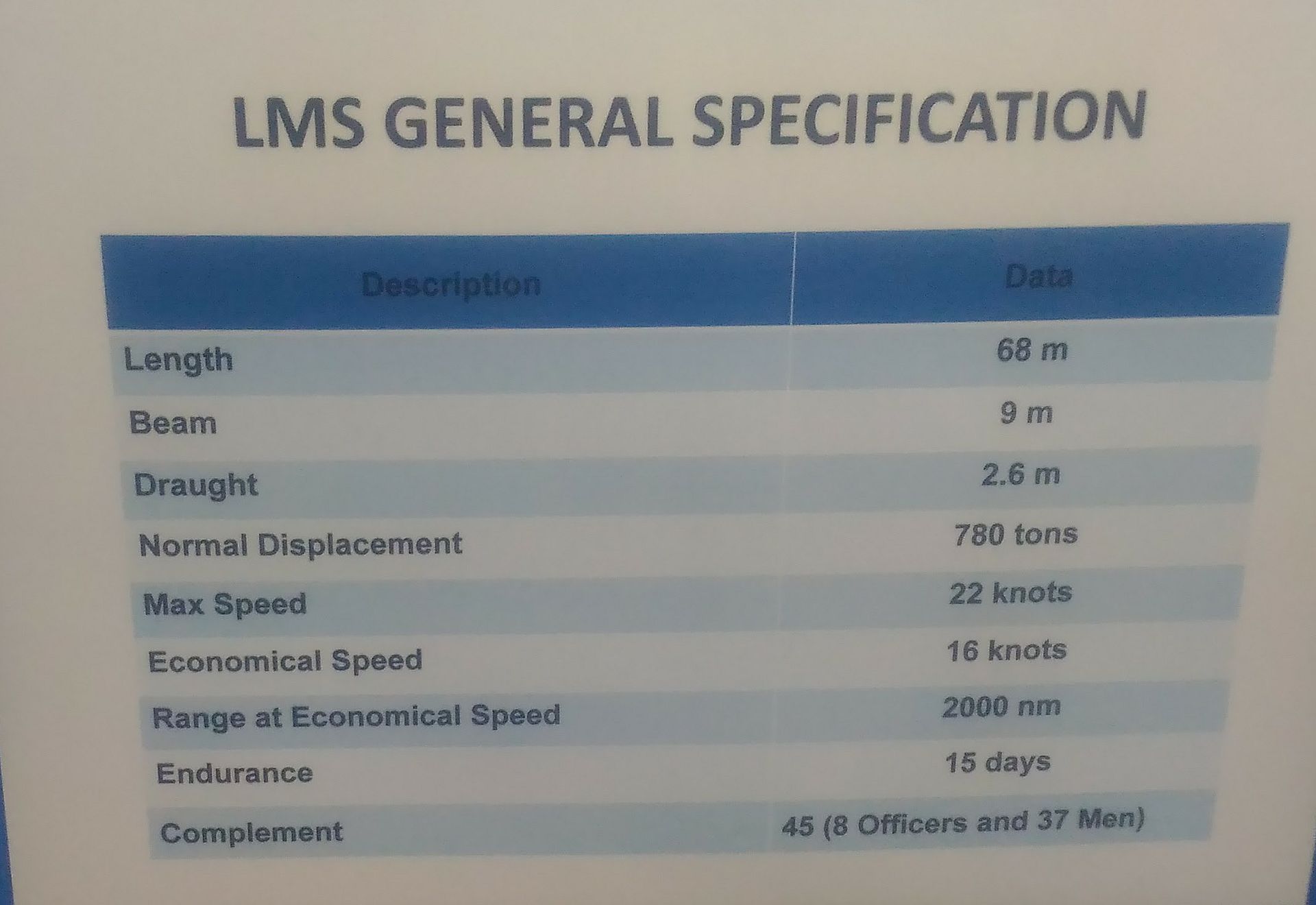
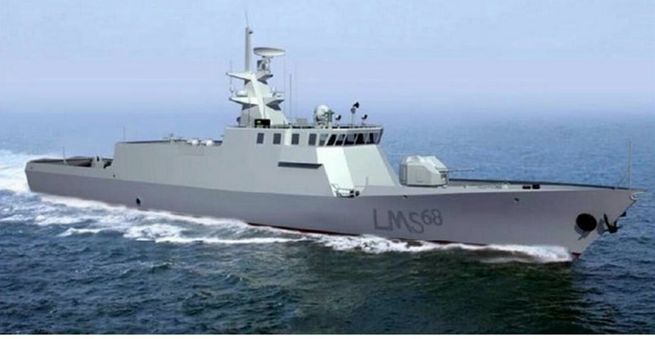 |
| CGI Image of LMS |
First Littoral Mission Ship expected in Oct 2019
Malaysia is expected to receive one of two Littoral Mission Ships (LMS) currently being built in China, in October 2019, says Defence Minister Hishammuddin Hussein.
He said the two ships being built by China Shipbuilding & Offshore International Co Ltd and Boustead Naval Shipyard were currently on schedule.
“I would like to state that I am satisfied with the progress report of the acquisition of both ships. We will get the first of two ships in October 2019.
“Another two LMS will be built in Malaysia after that. This shows that the close cooperation between both countries (Malaysia-China) will continue to be strengthened in various aspects of cooperation, including security, investment, trade, education and tourism,” he said in a statement here today.
The statement was issued by Hishammuddin, who is currently on a three-day working visit to China, which started yesterday.
On Nov 2 last year, Hishammuddin said the four LMS purchased by Malaysia from China in conjunction with Prime Minister Najib Razak’s official visit to the republic would be a joint venture effort.
On his working visit, Hishammuddin said he had conducted a meeting with the Secretary of the Central Political and Legal Affairs Commission of the Communist Party of China, Meng Jianzhu, the State Councillor of the People’s Republic of China, Yang Jiechi and the republic’s Defence Minister General Chang Wanquan.
Hishammuddin, who is also Special Task Force Minister said among the issues discussed were those concerning security, specifically the movement of the Islamic State militant group, and military cooperation between Malaysia and China

No comments:
Post a Comment